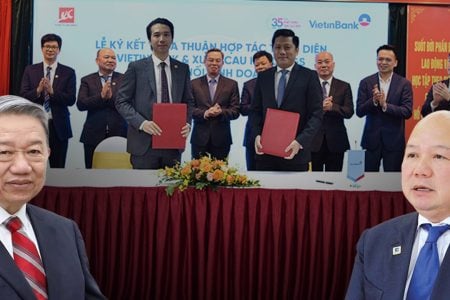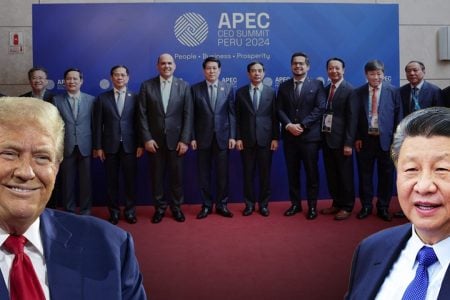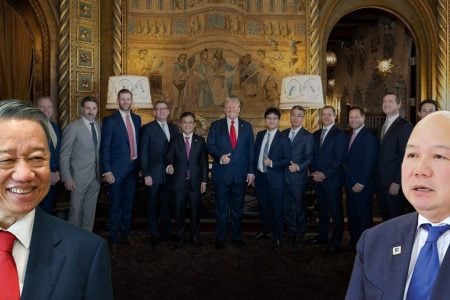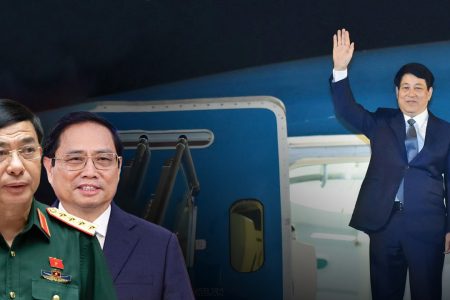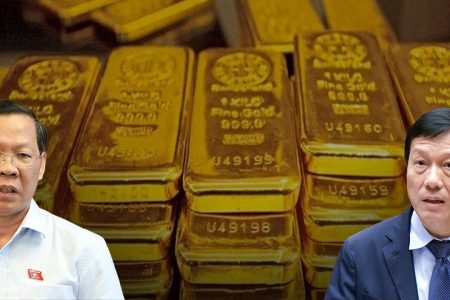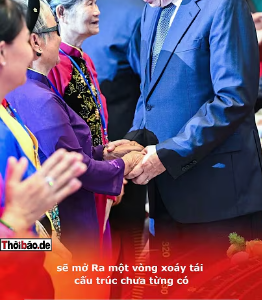In 2022, at the World Economic Forum Davos, Switzerland discussed, emphasizing the effectiveness of investment in education. Accordingly, “an investment of $1 in a child’s education can yield a lifetime return of up to $5. And high returns on investment for the country, up to 500%, especially in low-income countries, can be achieved, if the state focuses on funding primary and lower secondary education.“
That, it seems, Vietnamese leaders and educational policy makers hardly care.
Perhaps that’s why in Vietnam, a country of political stability and peace, the state budget spends 10 times more on police than on health and education. Specifically, in the last three years, budget spending for the Ministry of Public Security has always been the second highest, just behind the Ministry of National Defense, and more than ten times higher than that of the Ministry of Education and the Ministry of Health.
What has just been told us, the Vietnamese leadership is only interested in giving priority to the police force – the „shield“ to protect the regime, many times more than for the future of the country.
According to data released by the Ministry of Finance, in 2021, the budget expenditure for the Ministry of Public Security is about VND96 trillion, more than 10 times higher than the Ministry of Health (about VND9.1 trillion) and 13 times higher than that of the Ministry of Health (about VND 7.1 trillion). In 2022, the Ministry of Public Security is allocated an amount of VND95.5 trillion, and increases to nearly VND100 trillion in 2023.
Meanwhile, according to the provisions of the 2013 Amended Constitution, the constitution clearly states:
“Article 61”
- Education development is the leading national policy in order to raise people’s knowledge, develop human resources and foster talents.
- The State prioritizes investment and attracts other investment sources for education; take care of preschool education; to ensure that primary education is compulsory, the State does not collect tuition fees; step by step universalize secondary education; development of higher education and vocational education; implement the policy of scholarships and reasonable tuition fees.”
…
Pursuant to Article 61 of the Constitution, the State of Vietnam affirms: „Primary education is compulsory and the State does not charge tuition fees“.
However, in fact, in Vietnam, at primary public schools, there is still a situation of overcharging, under the so-called „socialization of education“.
So what is the socialization of education?
Education socialization is mobilizing the whole society to participate in the cause of education, to serve the cause of national development. It is a reasonable policy, but cannot, therefore, reduce the State’s importance when investing in the fields of education and health, because these are issues related to social security policy. of the country.
Vietnamese leaders always affirm and are proud that Vietnam is a country pursuing socialist goals. But they forget that, with the ideal of Communism, then, the policy of free education for all levels of education, free medical care for the whole population, is natural. During the subsidy period before 1986, Vietnam used to do the same.
Moreover, „the policy of free education for all levels, free medical treatment for the whole people“ is a demonstration of the superiority of socialism, as the Vietnamese Communist Propaganda previously declared. transmission.
Why do state leaders and General Secretary forget that? Sadly, the majority of students‘ parents in particular and the vast majority of Vietnamese people in general, do not understand their rights as provided for in the Constitution.

A concrete example of a poor Communist country is the Republic of Cuba, a country that is politically similar to the former Vietnam. According to Wikipedia, “In Cuba today, Education is free for all Cuban citizens, including higher education. Universal education applies to all children from the age of six to the end of basic secondary education (usually 15 years of age) and all students, regardless of gender or ethnicity, wear school uniforms with Color represents grade level. During the learning process, students do not have to pay any fees, from the cost of sewing uniforms, money to buy books, paper and pen and also be fed a meal or a whole day (depending on the school). As a result, almost not a single Cuban child is out of school, even in remote rural areas. And the same is true in the medical field.”
That is also why, the United Nations ranks and evaluates, the priorities for health and education in Cuba are „enviable compared to many other richer countries. Cuba demonstrates the superiority of the educational and health policy of Socialism. Although, according to the United Nations, Cuba is one of the countries with limited resources.”
The above shows that Vietnam today, in essence, has nothing called pursuing Communism or Socialism as they propagate. And our Vietnam today, is just a „barbaric and wild“ capitalist country, as seen in the 18th or 19th century before, but worse because it is led by the red capitalists. Perhaps, now only the name Communist Party of Vietnam remains.
The problem is, the current head of the Communist Party of Vietnam, General Secretary Nguyen Phu Trong, who claims to be a leading theorist on Communism, has always insisted that Vietnam pursues the goal of communism but forget the rudimentary things: „free education and health policy, showing the superiority of Socialism.„
So stop deceiving people. Vietnamese people know it all!.
Vu Anh (translated)









